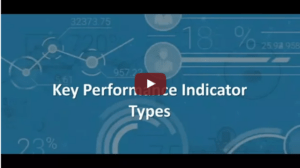As part of the KPI Basics series of content we are developing as part of the launch of the KPI.org website, I thought I would introduce the different types of key performance indicators (KPIs). As I describe in the accompanying video, like to use a framework called the Logic Model to describe the first four types.
The Logic Model is a framework that is helpful for differentiating what we produce from what we can only influence. It is also helpful for separating between elements that are more operational versus those that are more strategic in nature. For every key process, we spend resources like time, money, raw materials and other inputs. Then every process has measurements that could be tied to that particular process. The outputs of my process are what we produce. Ultimately though, I want to create an impact with my work. Outcomes capture that impact.
Let’s look at some examples of these types of measurements in real life. If I am a coffee maker, my Input measurements might focus on the coffee, the water, or my time invested. My Process measures could have anything to do with the process of making coffee, from the efficiency to the procedural consistency. The outputs of my process would be the coffee itself. I could have a variety of measures around the quality of my coffee output. Finally, my outcome measures would be related to things I can only influence, such as if my audience enjoys or buys the coffee. There is certainly more value in measuring impact than there is operations. If my customer enjoys the coffee I am doing something right. But you really do need a mix of both to truly understand performance.
To fully understand all of the elements of strategy execution, I can then add a few other broad categories of measures to my story. Project measures monitor the progress of our improvement initiatives and projects and can be designed to improve operations or strategic impact. These track things like scope, resources, deliverables or project risk. In my coffee example, I might have a new branding campaign to sell my coffee.
Employee measures tell us if employees are performing well or have the right skills and capabilities needed. I might measure my employees’ skills in making coffee, for instance.
Finally, risk measures tell us if there has been an important change in a risk factor that could have a significant impact on our organization. For example, I might have a risk indicator that tells me if global coffee bean availability becomes a problem.
The information that these different types of measures provide can be used to inform decision making. Using a family of measure like this can broadly inform your entire strategy.
To learn more about Key Performance Indicator development and implementation, please look into one of our KPI training or certification programs or visit kpi.org.
David Wilsey is the Chief Executive Officer with the Balanced Scorecard Institute and co-author of The Institute Way: Simplify Strategic Planning and Management with the Balanced Scorecard.

